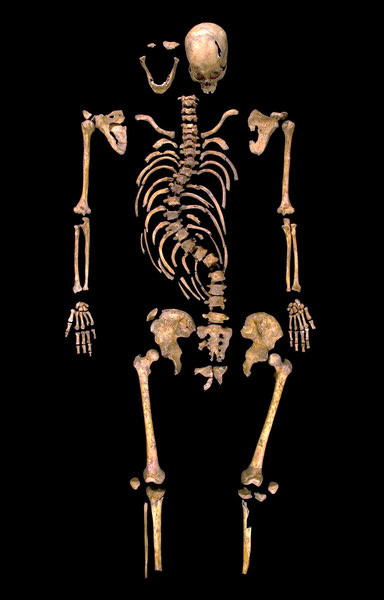
“But I, that am not shaped for sportive tricks
Nor made to court an amorous looking-glass;
. . .
Why, I in this weak piping time of peace
Have no delight to pass away the time,
Unless to spy my shadow in the sun
And descant on mine own deformity.
And therefore since I cannot prove a lover
…I am determined to prove a villain
And hate the idle pleasures of these days.”
Did anyone see this amazing news story a few months ago? After decades, no, centuries of searching, the skeleton of Richard III (“a horse, a horse, my kingdom for a horse!”) was found underneath a carpark in Leicester, England. The terrible bend in the spine must have told the diggers that they had finally found the resting place of the “Hunchback King”, and now it has been confirmed by DNA testing.
It has long been thought that Shakespeare’s portrayal of Richard (as above) has maligned his reputation. At that time, physical deformities were often thought of as a manifestation of ‘evil’. It is increasingly doubtful that he murdered The Princes in the Tower, but he was certainly a ruthless and feared warrior, which seems all the more incredible when you consider the physical obstacles he had to overcome. Described at the time as short, slight, hunched, and with one shoulder higher than the other, it is a miracle he could wear a suit of armour, deploy heavy weapons or fight hand to hand on the battlefield. But this he did, bravely, until his death brought the end to The War of The Roses.
Based on examination of the spine, doctors have concluded that he suffered from Idiopathic Adolescent Onset Scoliosis; translated, this means a curvature of the spine of unknown origin which began when he was a teenager. He would have had a ‘rib hump’, where the curvature and rotation of the spine causes the ribs to protrude at the back. The curvature probably impacted on his organs, especially his lungs, and he would have experienced chronic severe pain.
There is a certain shock on viewing the above photo as it is now rare to see an adult skeleton with such a severe scoliosis, at least in the West. Had Richard been alive today he would likely have had surgery as a teen to correct the curve. Historians have speculated that he may have received treatment for his spine, which could have included a technique similar to The Rack which applied traction to his arms and legs to straighten out his spine. He may also have worn along piece of metal or wood along his spine to try to keep it straight. Interestingly, this is not dissimilar to modern surgical treatment for scoliosis, in which metal rods are inserted along the spine to straighten it as it grows.
While it estimated that only 3% of the population have a scoliosis as severe as Richard’s, as many as 1 in 2 people have a smaller scoliosis. A common cause of this in Western societies is thought to be repetitive postural strain, such as carrying a school bag over one shoulder for many years. This may not be diagnosed until adulthood or may even remain undiagnosed. It may cause pain and dysfunction or not. If you know you have a scoliosis, you can manage it by exercising regularly – especially with flexibility and core strengthening exercises that will support the spine – and getting some kind of regular therapy – massage, osteopathy, chiropractic, Feldenkrais – to keep on top of the muscular imbalances which accompany it.
